Travel Bug
Travel
Bridging digital travel convenience with human expertise
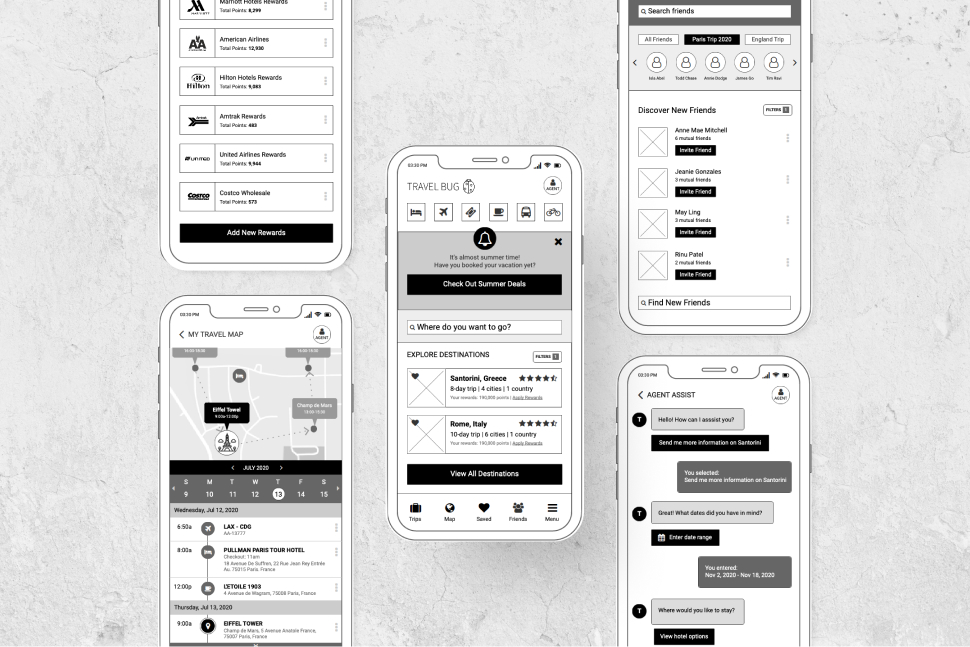
ROLE: UX Research, UX Design, UI Design, Design Leadership
METHODS: Trend Mapping, Competitive Analysis, Opportunity Mapping, In-depth Interviews, Data Synthesis, LoFi Wireframe Creation, Prototyping, Task Analysis, Usability Testing
TOOLS: Mural, Procreate on iPad Pro (hand-drawn storyboards), Balsamiq, Validately
TEAM: Group of 4
Business problem & context
Modern travelers increasingly rely on digital tools, making traditional travel agencies less relevant. However, research revealed a significant gap in the market: while travelers value the convenience of digital planning, they miss the personalized expertise of human agents when complications arise. With millennials spending $200 billion on travel in 2018 and taking 5.6 trips annually, and Gen X controlling 68% of big purchase decisions including travel, this disconnect represented both a challenge for traditional agencies and an opportunity to redefine the industry through thoughtful digital transformation.
My role & leadership
As UX Designer and Design Lead within a team of four, I guided our strategic approach and facilitated collaborative design activities. I personally led the trend mapping, competitive analysis, and opportunity mapping phases while coordinating our research synthesis. My leadership ensured we maintained focus on bridging the critical gap between digital convenience and human expertise throughout the design process.
Strategic approach
We approached this challenge using the Double Diamond methodology to ensure comprehensive exploration and focused solutions:
- Expansive research: We began with broad data collection from diverse traveler demographics, identifying pain points and opportunities in current travel planning experiences
- Opportunity mapping: Our competitive analysis revealed a gap in the market—most solutions offered either DIY flexibility OR agent assistance, but not both
- Strategic focus: We identified our growth opportunity in the least populated sector of the industry: combining DIY travel planning with expert agent assistance available at the customer's discretion
- Validation-driven iteration: We rigorously tested and refined our solution based on user feedback
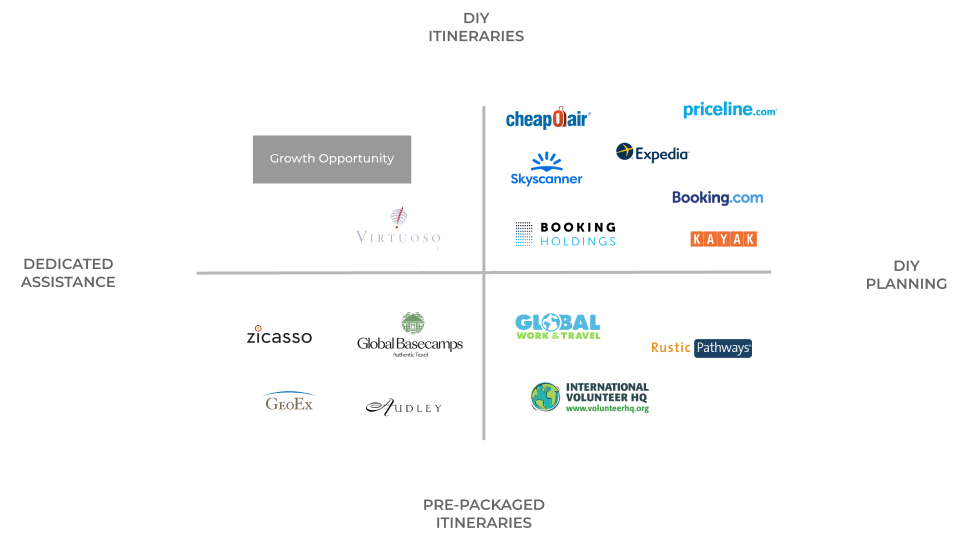
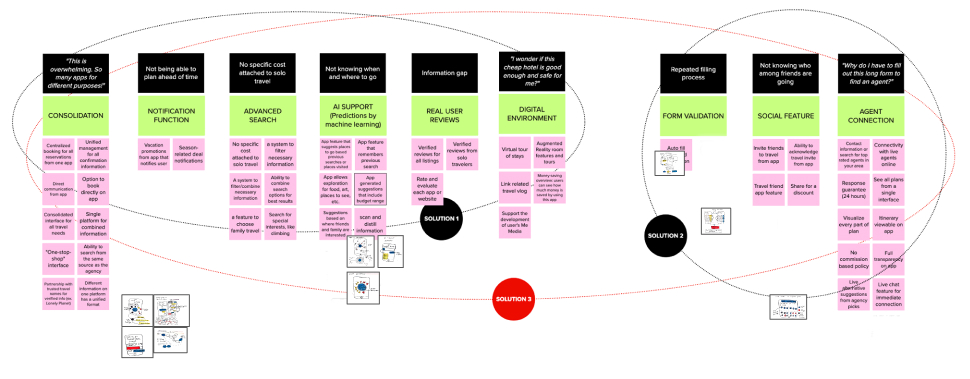
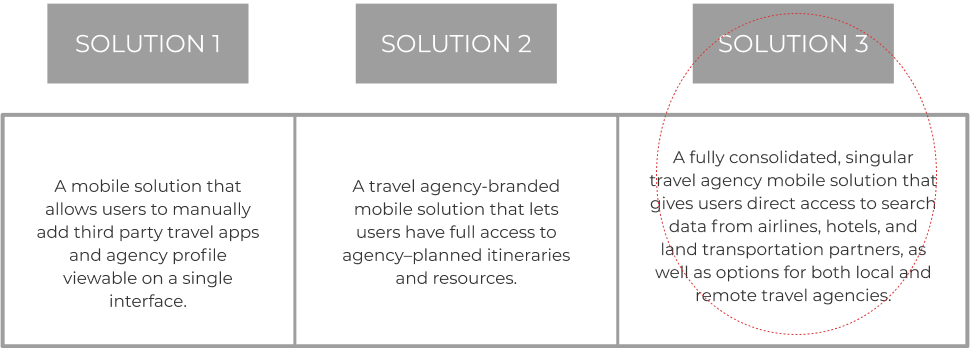
Key research insights
Through interviews and competitive analysis, we discovered several critical insights:
- Travelers view traditional agencies as inconvenient "middle men" that complicate rather than simplify planning
- DIY travelers hadn't used agencies in the past decade due to negative perceptions
- Most travelers require multiple apps for a single trip (research, booking, on-trip assistance)
- Users were open to agency services if they adopted user-focused technology
- Travelers expressed mistrust of advertised deals that seemed "too good to be true"
These insights led to our central challenge: creating a digital platform that small agencies could adopt as a new consultant-focused framework that encouraged simple, personalized travel planning while leveraging global travel professionals.
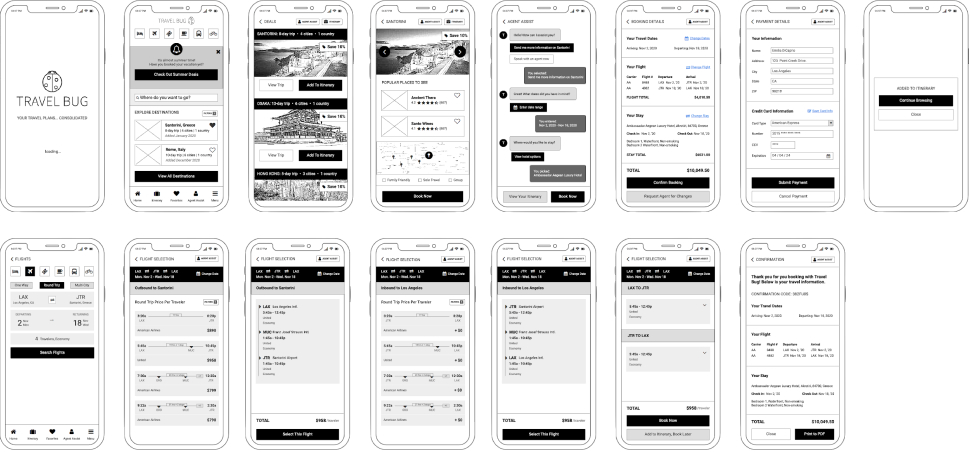
Key design decisions
Based on our research and solution value analysis, we made several strategic decisions:
- Hybrid approach: Combined self-service planning tools with on-demand agent assistance
- Transparency focus: Featured verified reviews and transparent pricing to address trust issues
- Social integration: Added friend-planning features based on strong user engagement during testing
- Consolidated experience: Combined typically separate travel functions (inspiration, planning, booking, assistance) into a single platform
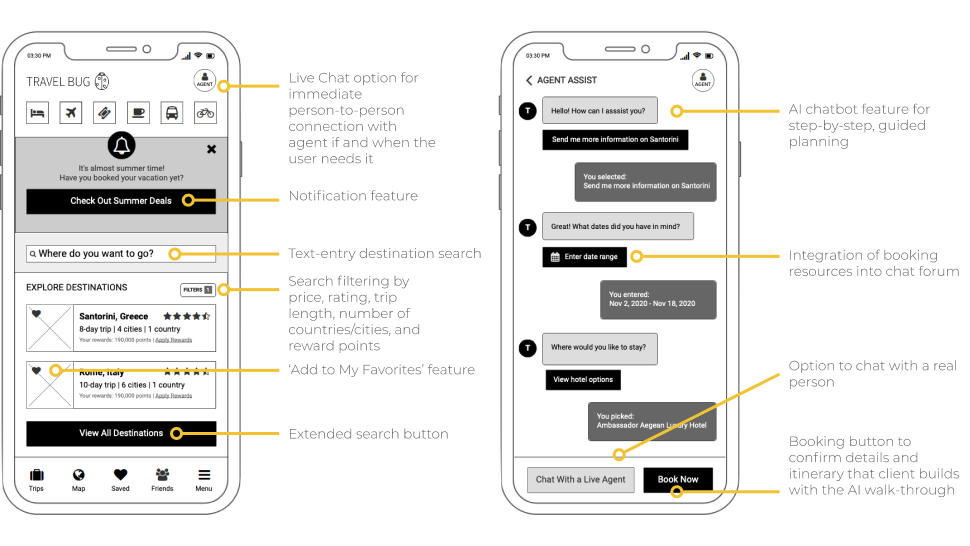
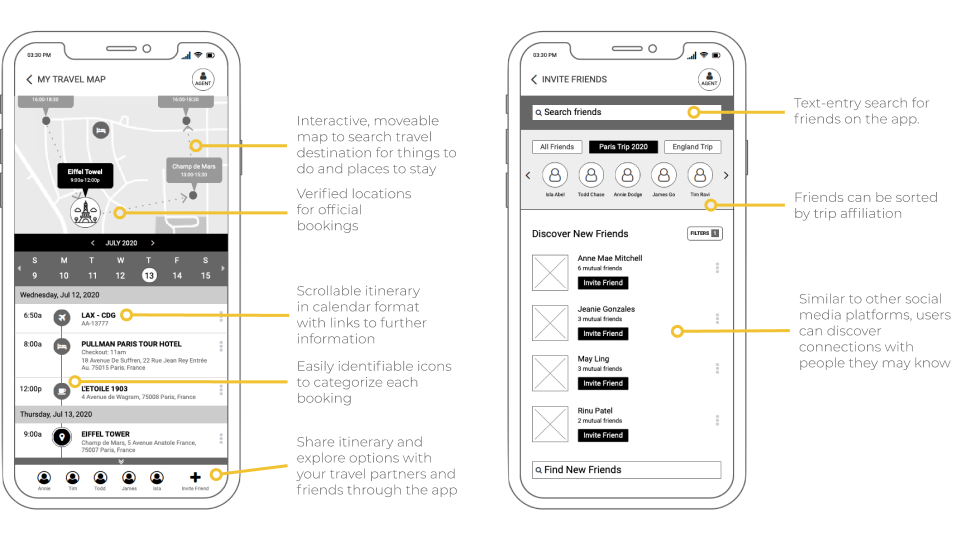
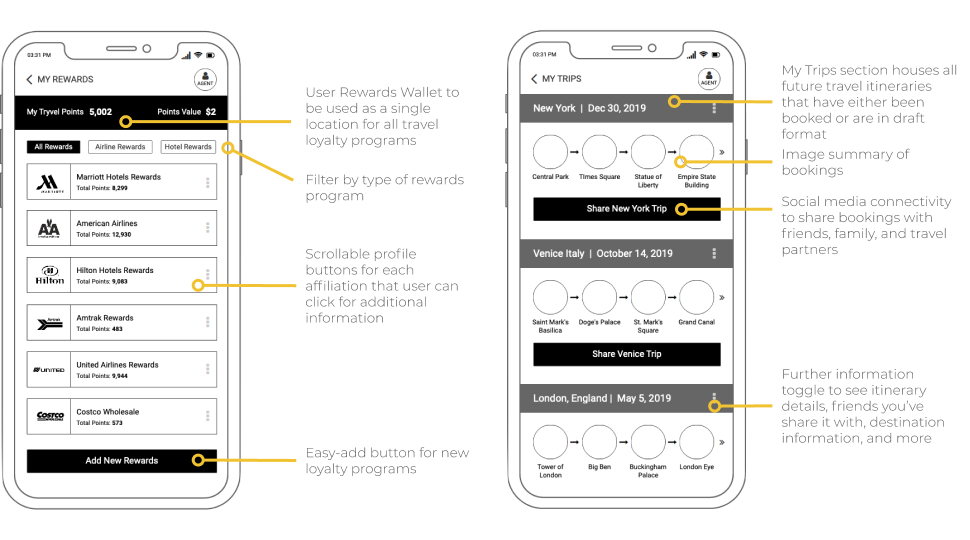
When validating our initial design, we discovered that users strongly valued the agent assistance feature—more than we anticipated—prompting us to elevate this functionality in our final design by combining agent assist and chat features with clear indication that users would connect with live humans rather than bots.
Results & business impact
Our solution successfully addressed the gap in the market by:
- Creating new business opportunities for traditional agencies through a digital platform they could readily adopt
- Improving user experience by combining digital convenience with human expertise
- Building trust through transparency and verified reviews
- Simplifying the travel planning process by consolidating features typically spread across multiple apps